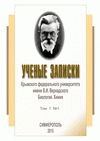The research of neurochemical mechanisms of respiratory regulation is very relevant, which is due to the need for further development of ideas about the role of various parts of the central respiratory neural network in the generation of breathing rhythm and pattern. In this aspect, the retrotrapezoid nucleus (RTN) is of interest, which is the main chemosensory structure of the medulla and provides the central chemoreflex under conditions of hypercapnia and hypoxia. Various neurotransmitters, including adenosine triphosphate (ATP), participate in the modulation of respiration at the RTN level. It is known that ATP provides purinergic signaling in the RTN during hypercapnia and hypoxia. However, under normoxia, the role of ATP in the regulation of respiration by RTN structures not been sufficiently studied. The aim of our research was to analyze the participation of ATP, as an agonist of purinergic receptors, in the mechanisms of respiratory control at the level of the RTN in rats breathing normal atmospheric air. The reasearch performed on adult rats weighing 180-220 g, anesthetized with urethane, in which the respiratory effects of microinjections of an ATP solution into the RTN were studied. Microinjections were carry out through a glass microcannula (tip diameter 30-50 μm), introduced into the brain according to stereotaxic coordinates. Control animals were injected with artificial cerebrospinal fluid into the RTN. In rats, the external respiration pattern was recorded using a spirograph connected to a tracheostomy tube, and simultaneously bioelectrical activity of the diaphragm was recorded on an electromyograph by bipolar needle electrodes Changes in frequency and volume parameters of spirogram and electromyogram (EMG) were analyzed. It has been established that microinjections of ATP into the RTN increase the respiratory activity of rats breathing atmospheric air of normal composition, as evidenced by changes in external respiration and EMG of the diaphragm. Analysis of spirogram revealed an increase in the respiratory rate (due to a decrease in the duration of inspiration and expiration), an increase in tidal volume, volumetric rate of inspiratory flow and minute lung ventilation compared to the initial level and control. Microinjections of ATP into the RTN also had a stimulating effect on the bioelectrical activity of the diaphragmatic muscle. The EMG showed an increase in the frequency of inspiratory burst discharges in combination with a decrease in the duration of both, the themselves bursts and interbursts intervals, relative to the initial values. These effects were accompanied by an increase in the amplitude of oscillations in inspiratory discharges. The observed reactions of the diaphragm statistically significantly exceeded the changes in control rats. The obtained results fit into the framework of the concept that activation of purine receptors in the medulla oblongata stimulates motor inspiratory output from the respiratory center. Taking into account the literature data, the increase in lung ventilation and bioelectrical activity of the diaphragm in response to ATP microinjections into the RTN may be explained by the activation of P2Y-type purinergic receptors. Thus, data obtained confirming the participation of the purinergic system at the level of the RTN in the respiration control in rats breathing atmospheric air of normal composition. Based on the analysis of our own and literary data, the assessment of the molecular mechanisms of action of ATP, as the most important component of the purinome, allows us to conclude that P2Y receptors play an important role in the implementation of the respiratory effects of ATP in the RTN area. The interaction of ATP with receptors of this type in the RTN region causes stimulation of external respiration and inspiratory burst activity of the diaphragmatic muscle, which indicates the contribution of purinergic signaling to the formation of inspiratory drive from the central respiratory neural network to respiratory motor neurons. It is noteworthy that the increase in respiration caused by the effect of ATP on the RTN is observed not only under conditions of altered gas homeostasis, as indicated by many publications, but also under normoxia, which is confirmed by our data. This fact allows us to consider the purinergic mechanisms of the RTN not only in the context of maintaining the body’s vital functions under hypoxic and hypercapnic conditions, but also in the aspect of regulating respiration under conditions of optimal gas balance.
regulyaciya dyhaniya, retrotrapecievidnoe yadro, R2-receptory, adenozintrifosfat (ATF), mikroin'ekcii, vneshnee dyhanie, elektromiogramma diafragmal'noy myshcy.
1. Manganelli F. Brainstem involvement and respiratory failure in COVID-19 / F. Manganelli, M. Vargas, A. Iovino [et al.] // Neurol. Sci. – 2020. – Vol. 41, No 7. – P. 1663–1665.
2. Gubarevich E. A. Mikroin'ekcii rastvora hlorida kobal'ta v infralimbicheskuyu koru podavlyayut reakcii sistem krovoobrascheniya i dyhaniya anestezirovannoy krysy na mikroelektrostimulyaciyu
3. Guyenet P. G. Rostral ventrolateral medulla, retropontine region and autonomic regulations / P. G. Guyenet, R. L. Stornetta // Auton. Neurosci. – 2022. – Vol. 237. – 102922. https://doihttps://doi.org/10.1016/j.autneu.2021.102922
4. Guyenet P. G. The retrotrapezoid nucleus: central chemoreceptor and regulator of breathing automaticity / P. G. Guyenet, R. L. Stornetta, G. M. P. R. Souza [et al.] // Trends. Neurosci. – 2019. – Vol. 42, No 11.
5. Kumar N.N. PHYSIOLOGY. Regulation of breathing by CO2 requires the proton-activated receptor GPR4 in retrotrapezoid nucleus neurons / N.N. Kumar, A. Velic, J. Soliz [et al.] // Science. – 2015. – Vol. 348.
6. Shi Y. Neuromedin B expression defines the mouse retrotrapezoid nucleus / Y. Shi, R. L. Stornetta, D. S. Stornetta [et al.] // J. Neurosci. – 2017. – Vol. 37(48). – P. 11744–11757.
7. Gonye E. C. Intrinsic molecular proton sensitivity underlies GPR4 effects on retrotrapezoid nucleus neuronal activation and CO2-stimulated breathing / E. C. Gonye, Y. Shi, K. Li [et al.] // J. Neurosci. – 2024.
8. Souza G. Contribution of the retrotrapezoid nucleus and carotid bodies to hypercapnia- and hypoxia-induced arousal from sleep / G. Souza, R. L. Stornetta, D. S. Stornetta [et al.] // J. Neurosci. – 2019.
9. Petrova N. A. Sindrom vrozhdennoy central'noy gipoventilyacii. Opyt NMIC im. V. A. Almazova / N. A. Petrova, A. V. Bryzzhin, D. P. Fofanova [i dr.] // Rossiyskiy zhurnal personalizirovannoy
10. Bochorishvili G. Pre-Bctzinger complex receives glutamatergic innervation from galaninergic and other retrotrapezoid nucleus neurons / G. Bochorishvili, R. L. Stornetta, M. B. Coates, P. G. Guyenet
11. Souza G. M. P. R. Neuromedin B-expressing neurons in the retrotrapezoid nucleus regulate respiratory homeostasis and promote stable breathing in adult mice / G. M. P. R. Souza, D. S. Stornetta, Y. Shi [et
12. Guyenet P. G. Proton detection and breathing regulation by the retrotrapezoid nucleus / P. G. Guyenet, D. A. Bayliss, R. L. Stornetta [et al.] // J. Physiol. – 2016. – Vol. 594, No 6. – P. 1529–1551.
13. Moreira T. S. The retrotrapezoid nucleus and the neuromodulation of breathing / T. S. Moreira, C. R. Sobrinho, B. Falquetto [et al.] // J. Neurophysiol. – 2021. – Vol. 125, No 3. – P. 699–719.
14. Budaev A. I. Respiratornye reakcii na mikroin'ekcii antagonista GAMKv-receptorov 2-gidroksisaklofena v retrotrapecievidnoe yadro u krys / A. I. Budaev, O. A. Vedyasova,
15. Reklow R. J. The purinome and the preBctzinger complex – a mynage of unexplored mechanisms that may modulate/shape the hypoxic ventilatory response / R. J. Reklow, T. S. Alvares, Y. Zhang [et al.]
16. Wenker I. C. Astrocytes in the retrotrapezoid nucleus sense H+ by inhibition of a Kir4.1-Kir5.1-like current and may contribute to chemoreception by a purinergic mechanism / I. C. Wenker, O. Kryneisz,
17. Sobrinho C. R. Purinergic signaling contributes to chemoreception in the retrotrapezoid nucleus but not the nucleus of the solitary tract or medullary raphe / C. R. Sobrinho, I. C. Wenker, E. M. Poss [et al.]
18. Barna B. F. Purinergic receptor blockade in the retrotrapezoid nucleus attenuates the respiratory chemoreflexes in awake rats / B. F. Barna, A. C. Takakura, D. K. Mulkey, T. S. Moreira
19. Lindsey B. G. Computational models and emergent properties of respiratory neural networks / B. G. Lindsey, I. A. Rybak, J. C. Smith // Compr. Physiol. – 2012. – Vol. 2, No 3. – P. 1619–1670.
20. Guyenet P. G. Neural control of breathing and CO2 homeostasis / P. G. Guyenet, D. A. Bayliss // Neuron. – 2015. – Vol. 87, No 5. – P. 946–961. DOI:https://doi.org/10.1016/j.neuron.2015.08.001
21. Silva J. N. Neuroanatomical and physiological evidence that the retrotrapezoid nucleus/parafacial region regulates expiration in adult rats / J. N. Silva, F. M. Tanabe, T. S. Moreira, A. C. Takakura
22. Funk G. D. Neuromodulation: purinergic signaling in respiratory control / G. D. Funk // Compr. Physiol. – 2013. – Vol. 3, No 1. – P. 331–363. DOIhttps://doi.org/10.1002/cphy.c120004
23. Hawkins V. E. Purinergic regulation of vascular tone in the retrotrapezoid nucleus is specialized to support the drive to breathe / V. E. Hawkins, A. C. Takakura, A. Trinh [et al.] // ELife. – 2017. – Vol. 6.
24. Mulkey D. K. Purinergic P2 receptors modulate excitability but do not mediate pH sensitivity of RTN respiratory chemoreceptors / D. K. Mulkey, A. M. Mistry, P. G. Guyenet, D. A. Bayliss // J. Neurosci. – 2006.
25. Andrejew R. The P2X7 receptor: central hub of brain diseases / Andrejew R., Oliveira-Giacomelli B., Ribeiro D. E. [et al.] // Front. Mol. Neurosci. – 2020. – Vol. 13. – P. 124. DOI:https://doi.org/10.3389/fnmol.2020.00124.
26. Toledo C. Potential role of the retrotrapezoid nucleus in mediating cardio-respiratory dysfunction in heart failure with preserved ejection fraction / C. Toledo, D. Ortolani, F. C. Ortiz [et al.] // Front. Physiol. – 2022.





